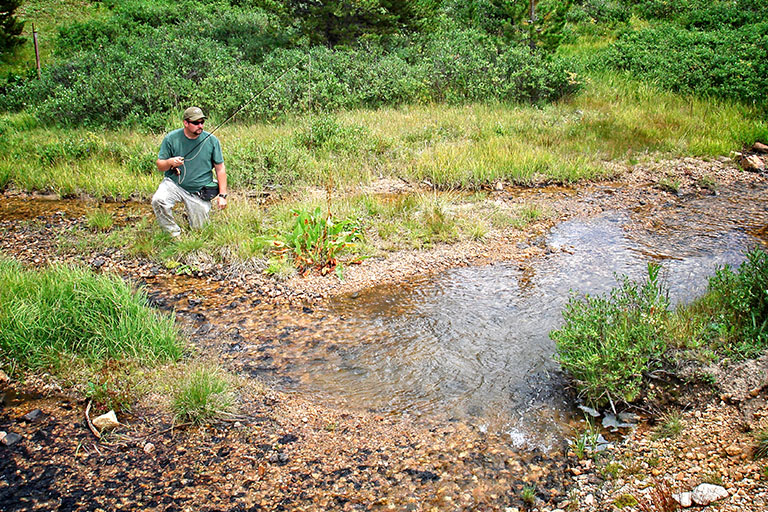By Dennis Smith
I think I’d rather fly fish for brook trout than any other kind of fish, though I often say the same thing about cutthroats. I guess it actually depends on what I’m fishing for at the moment, because if the question comes up when I’m on a bluegill pond, I might tell you, “Gills are the greatest.” Then, of course, nothing fires my rocket like hooking a meaty wiper or walleye on Lone Tree Reservoir while floating the flats at night. Or, for that matter, stringing up a bunch of tasty Boyd Lake crappies, white bass or yellow perch.
Yet, when all the fat is boiled away, I have to say I enjoy brookie fishing most of all. Where they live, I’m sure, has a lot to do with that. Brookies, as most of us call them, savor the solitude of backcountry streams, beaver ponds and high mountain lakes. I do, too. I haven’t had a lot of experience on the famous trout rivers of the West, but I’ve had enough of the mob scene you usually find on them to know that, like the brookies, I’m not especially fond of crowds. And, unlike those crowds, I’m not especially hung up on big fish. Consequently, brookies suit me just fine.
One of my favorite brook trout streams begins life as melting snow and a network of random icy trickles high on the eastern face of the Continental Divide in Rocky Mountain National Park. I haven’t actually been to its source, but I’ve been to places that look just like it on the map. I can visualize the pockets of algae-stained snow lingering in the shadows, the frigid fingers of snow melt weeping from beneath layers of ancient glacial rock, disappearing into and welling up from poison-green carpets of moss and decaying forest duff to gurgle, creep and claw tenaciously downhill through towering stands of spruce and fir, emerging finally as a recognizable brook in the rock-studded gorge below.
This is predominantly an alpine-to-subalpine environment in the neighborhood of 10,000 feet above sea level. It’s hostile territory and cold enough most of the year that brook trout probably couldn’t survive here even if the little brooks were deep enough. A few hundred feet below, though, it’s a different story. At roughly the elevation where you start finding aspen groves, figworts, shooting stars and meadow grasses instead of wind-twisted pines, scree gravel and tundra flowers, is about where you’ll start finding brook trout. And the farther downstream you go — up to a point — the bigger they get. That point is usually where the water warms enough that browns and rainbows find it comfortable, and brookies don’t. And big, by the way, is about 9 to 10 inches up here. Really big is 12 or 14 inches.
It’s their typically small size that seems to discourage most of the fly fishermen I know from taking brook trout too seriously. And it’s the lack of serious fly fishermen that makes brookie fishing that much more appealing to me.

